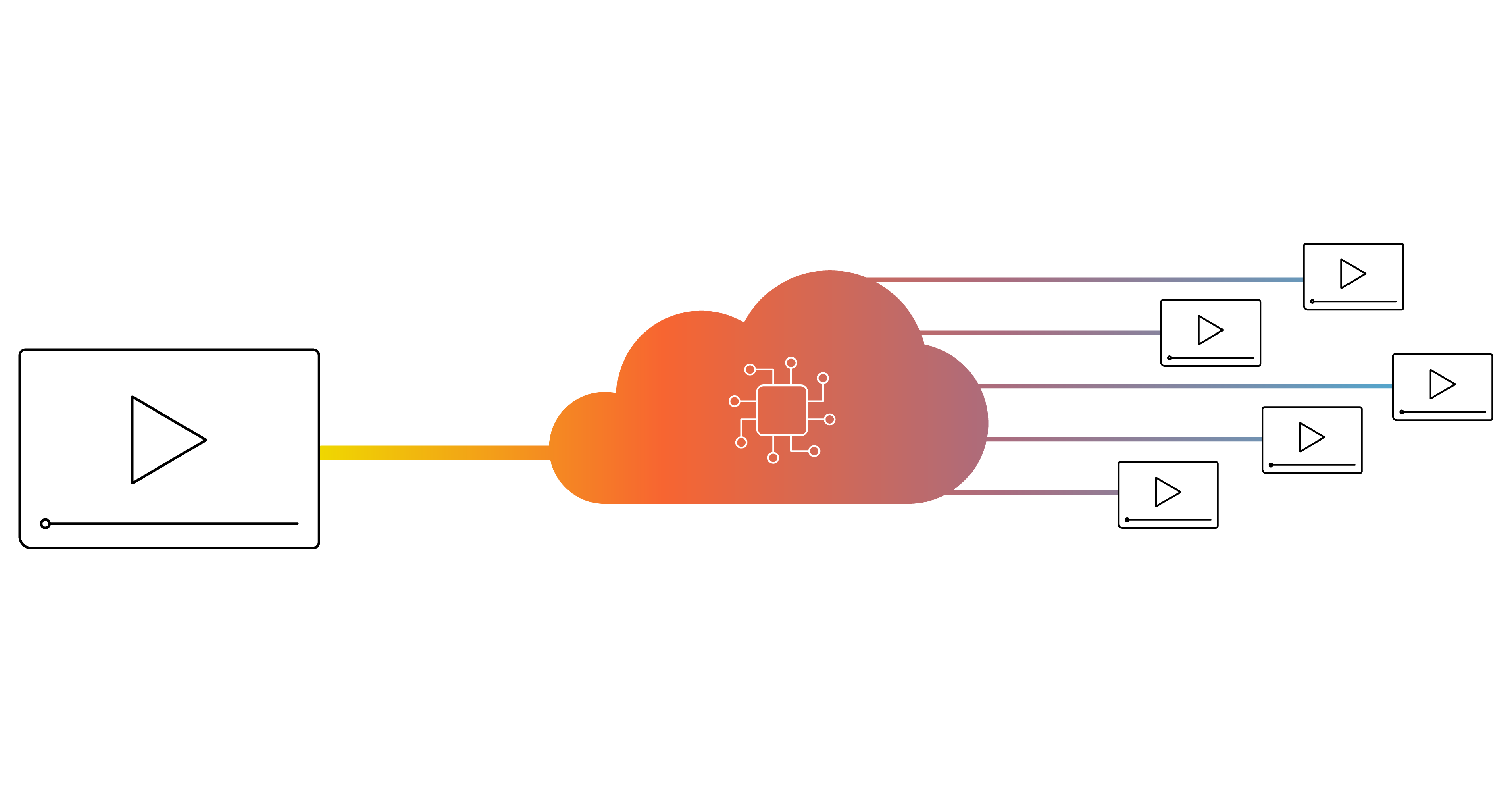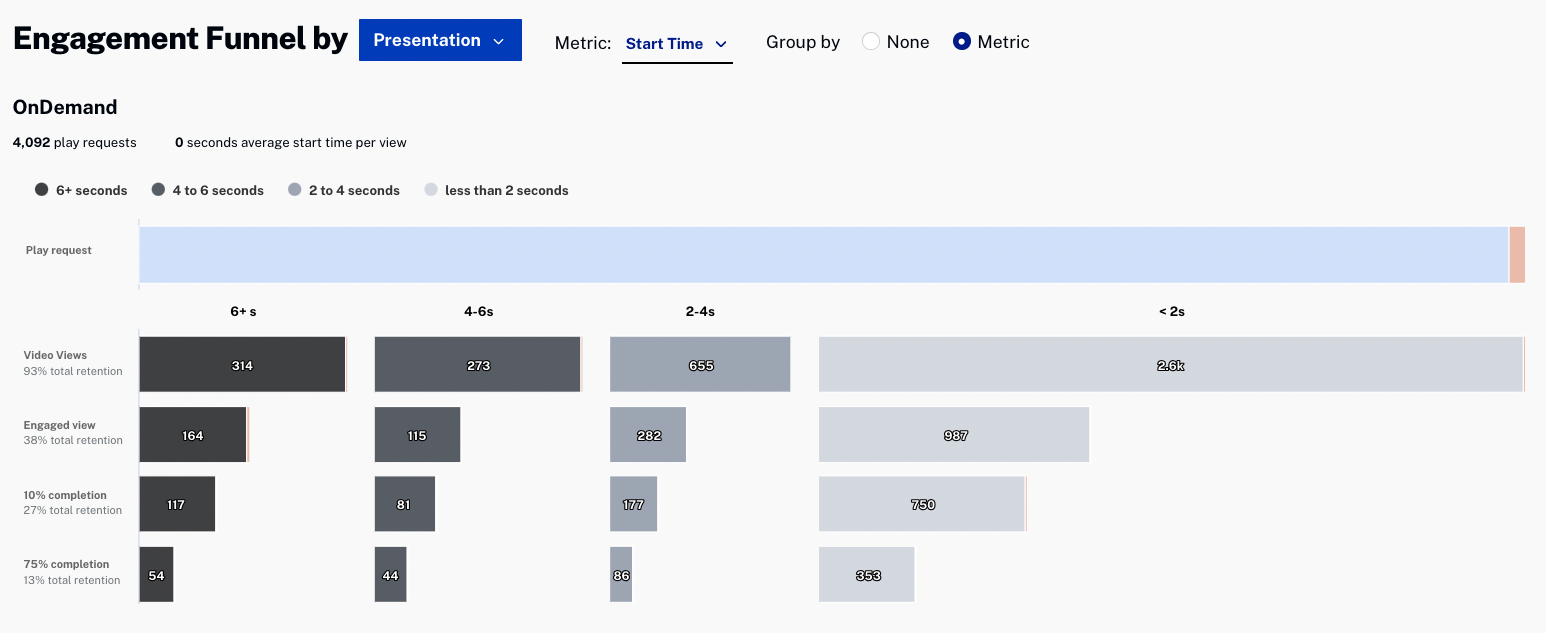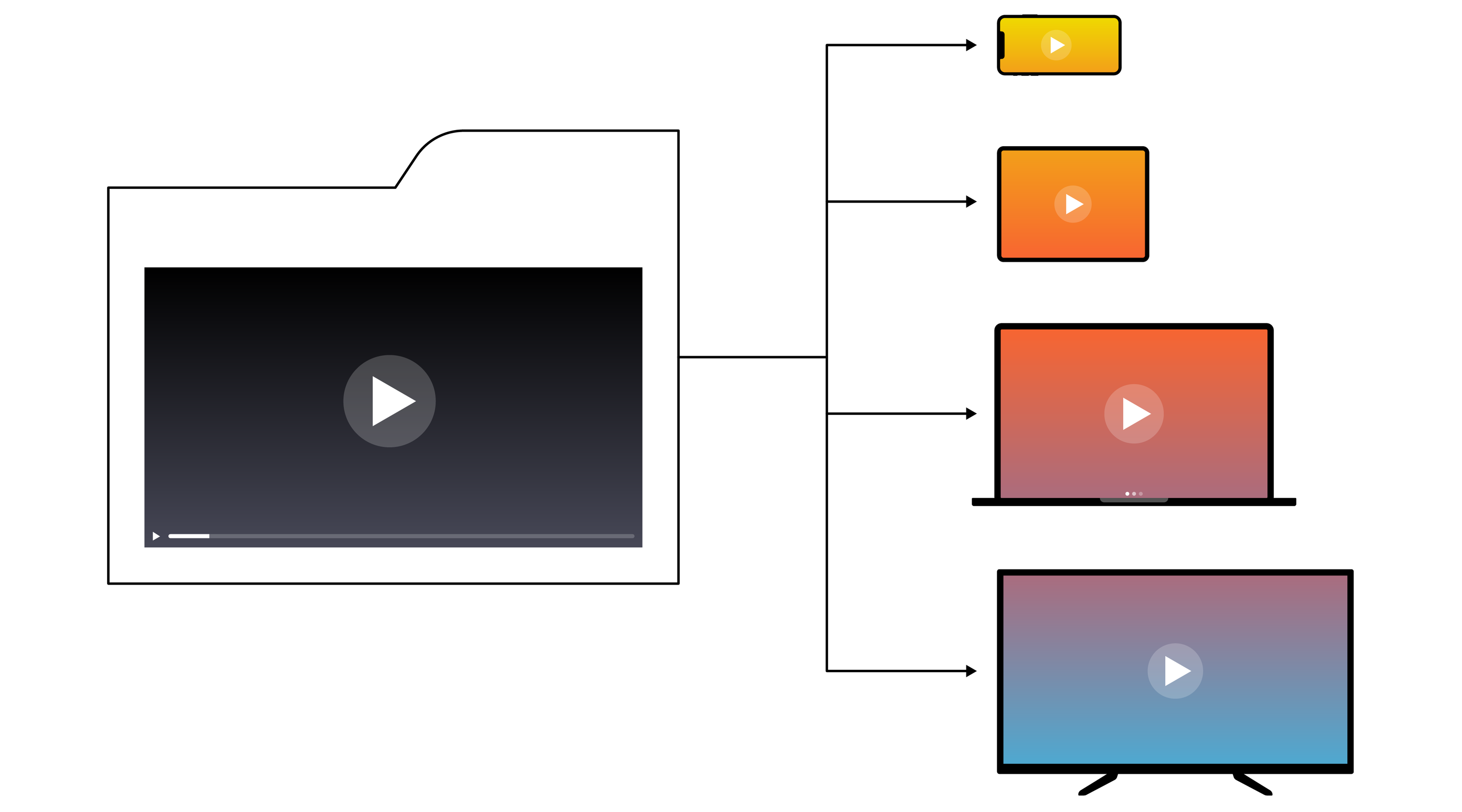Context-Aware Encoding: Testing for Cost Savings and QoE
Media

OTT services now reach more devices and platforms than ever, creating a growing demand for higher-quality video content. However, this desire for better quality comes at a cost. Specifically, there are increased infrastructure and operations costs due to additional content storage, higher throughput origin servers, and greater utilization of Content Delivery Network (CDN) bandwidth.
The challenge is to lower CDN costs without compromising the viewer’s quality of experience (QoE). The solution is Context-Aware Encoding (CAE).
CAE delivers an opportunity to reduce operational complexity while lowering storage and streaming costs. By leveraging machine learning–derived algorithms, CAE automatically improves streaming efficiency without undermining QoE. You can see for yourself, using our CAE Calculator. If it still sounds too good to be true, we tested it on our own OTT service, PlayTV. Click below to see the results, or keep scrolling to get a refresh on how CAE works.
Table of Contents
Understanding Context-Aware Encoding
Traditional Encoding
Most video streamed over the internet today uses Adaptive Bitrate (ABR) streaming technologies, such as HLS or MPEG-DASH, to optimize video playback. An ABR stream contains multiple “renditions” of the same video, which are encoded at different resolutions and bitrates according to a pre-defined encoding ladder.
When a user presses the play button, the player receives a manifest of the renditions available for playback. The player selects which rendition to play based on several factors, including available bandwidth, buffer fullness, and the size of the playback window. As these factors change during playback, the player can switch to renditions of higher or lower quality, displaying the best possible video quality with minimal buffering.
However, static bitrate ladders often produce inconsistent quality for different types of content. High-complexity video content such as sports requires more bits to achieve an acceptable viewing experience than does lower complexity content like animation. Thus, using the same profile to encode different types of content, or content for different channels, often leads to wasted storage and bandwidth.
Streaming delivery is one of the single greatest cost centers for an OTT service. Excess storage, inefficient cache utilization, and streaming bandwidth can represent significant money, especially as the content library grows and the service attracts more viewers.
Context-Aware Encoding
Unlike traditional encoding methods, Context-Aware Encoding utilizes contextual information—like the type of content, device capabilities, network conditions, and viewer behavior—to optimize video streaming. Instead of using one ABR ladder for all content, CAE analyzes each source video and intelligently builds a custom encoding ladder (set of renditions) for each piece of content.
In addition, CAE takes into account constraints associated with the delivery network and device being used to view the content. It decides how many renditions are needed and what resolutions and bitrates to use for each, while maintaining a consistent level of quality across all titles.
Optimizing assets with CAE can provide significant cost savings that increase the longer they’re published and as the audience size increases. However, cost savings are not the only driver for streaming organizations. Highly engaged viewers are deeply valued, and few things negatively impact viewer engagement as much as QoE impairments.
Benefits of Context-Aware Encoding
Context-Aware Encoding comes with multiple benefits for CDN delivery costs.
- Promotes efficient bandwidth utilization, which reduces data traffic and decreases costs
- Lowers storage requirements by optimizing the ABR ladder for each media, potentially resulting in fewer videos to store
- Generates more efficient caching, due to needing fewer discrete variants and compression settings tailored to the content (this can result in better perceived picture quality, faster load times, and smoother playback—conditions that drive higher quality of experience)
These are real benefits that can be tested and quantified. Below are the steps we took to test CAE’s benefits on our own OTT service.
- Ingest new content with a standard encoding profile
- Measure per asset storage requirements
- Measure audience views and average bitrates streamed per view
- Measure QoE performance
- Measure audience engagement score
- After 30 days of streaming use, reprocess the content library with CAE-optimized ingest profiles
- Identify differences in ABR ladder
- Quantify differences in storage costs, streaming rates, QOE performance, and audience engagement
- Calculate impacts and summarize conclusions
Implementation of Context-Aware Encoding
PlayTV is Brightcove’s OTT streaming service dedicated to the topic of video, available on web, mobile, and CTV apps.
To test CAE on PlayTV, we began by identifying ideal assets for reprocessing. We analyzed which assets were driving views (and by extension, costs), and we measured audience engagement with those assets. Using QoE Insights, we built a snapshot of how the standard encoding ladder was delivered to the audience and how QoE impairments affected the audience.
After reprocessing, these were the changes we saw in the Adaptive Bitrate (ABR) streaming configuration.
| PlayTV Standard ABR Ladder | PlayTV CAE Ladder |
|---|---|
| 480 x 270 @ 448 kbps | 320 x 180 @ 244 kbps |
| 640 × 360 @ 699 kbps | 480 x 270 @ 464 kbps |
| 640 x 360 @ 899 kbps | 640 x 360 @ 750 kbps |
| 960 x 540 @ 1199 kbps | 960 x 540 @ 1406 kbps |
| 960 x 540 @ 1699 kbps | 1280 x 720 @ 2125 kbps |
| 1280 x 720 @ 1999 kbps | |
| 1280 x 720 @ 3500 kbps | |
| STORAGE RATE: 4.5GB/hr | STORAGE RATE: 2.1GB/hr |
Initially, the asset ABR ladder had seven variants and required 10.4Mbps combined bandwidth. With CAE, the mix of renditions created across different asset types was altered to five variants requiring only 5Mbps. Depending on scene complexity and other attributes, some assets were slightly higher and others slightly lower. But given the commonality of the materials, the noted ladder was typical of most of the assets that were reprocessed.
Results of Context-Aware Encoding
Storage Costs
The introduction of CAE had a significant effect on storage costs. The typical asset storage requirement was reduced from 4.5GB/hr to approximately 2.1GB/hr. Consequently, the cost per content hour dropped from $0.363 to approximately $0.173, leading to an estimated 52% reduction in storage costs.
Streaming Costs
QoE Insights provided detailed reporting on what stream variants were being delivered by device across the viewing audience. With this data, we could clearly see the streaming bandwidth required to reach the audience as well as what renditions were driving bandwidth consumption.
| Variant | Percent of Plays - Standard | Percent of Plays - CAE |
|---|---|---|
| <540p | 28% | 47% |
| 540p | 11% | 7% |
| 720p | 54% | 41% |
| Other | 7% | 5% |
| Avg Bitrate Per Play | 2.25Mbps | 1.8Mbps |
The chart above highlights how CAE delivered stream variants smaller than 540p more often than the standard ladder. The results show an approximately 20% reduction in streaming bandwidth utilization.
Of course, more viewers spending more time with lower resolution variants could result in QoE impairments. While initially it may seem counterintuitive, CAE applied better compression strategies for the content, resulting in encoding settings that didn’t waste bits. CAE had eliminated stream variants that were targeting specific resolutions but not applying sufficient bitrate to deliver a quality stream. In digging into the QoE details, a clear pattern emerged that the CAE stream variants were consistently delivering superior viewer experiences.
QoE Performance
QoE Insights provided a substantial amount of detail validating that the overall viewer experience was considerably improved after applying CAE. Below are summary views that highlight aggregated details for sample periods before and after applying CAE.
QoE Performance Summary - Before CAE Optimization

QoE Performance Summary - After CAE Optimization

The results show that, for the most impactful QoE measurements, CAE stream variants delivered a better overall experience.
| Metric | Measured Before CAE | Measured After CAE | Percent Change |
|---|---|---|---|
| Video Start Time (Avg) | 4.586 seconds | 2.573 seconds | 44% Improvement |
| Rebuffering Rate | 9:46 | 7:03 | 28% Improvement |
| Upscale Time | 22:53 | 24:00 | 5% Degradation |
Video Start Time and Rebuffering Rates improved dramatically, allowing the player to get to the first frame faster due to enhanced efficiency. CAE stream variants require smaller segments to load into local player buffers, resulting in better cache utilization and smaller payload sizes.
Upscale time measures the amount of time a player is requesting a stream variant that is a lower resolution than the maximum resolution of the display device. The slight increase in upscale time is in line with expected behavior. When connecting to the CAE-optimized ABR ladder, the player has better options for preventing rebuffering events, which is by far the more disruptive QoE impact.
Studies show that QoE impairments significantly impact viewer engagement. This is clearly shown when looking at engagement funnel details in QoE Insights. For example, the below image shows the relationship between Video Start Time and the likelihood of disengagement before being counted as an engaged viewer.

Of 4,092 total play requests, only 164 (4%) became engaged viewers if the video start time exceeded 6 seconds. Contrast that with 987 (24%) engaged viewers when the Video Start Time was less than 2 seconds. Simply improving video start time results in a 600%+ increase in engaged viewers.
QoE impairments have an outsized effect on audience engagement. Not only does CAE provide cost savings, it drives viewer engagement through better QoE performance.
Summary of Context-Aware Encoding Results
Context-Aware Encoding provides numerous benefits, including fewer variants per asset and optimized variants based on scene complexity and viewer context. But after testing it on our own OTT service, those benefits are quantifiable and undeniable.
- 52% reduction in storage costs
- 25% reduction in streaming costs
- 44% faster video load times
- 28% decreased rebuffering
- 10% fewer stall events
For a small OTT service like Brightcove’s PlayTV, adopting CAE produced cost savings without additional operational complexity. With an estimated 32% combined savings on streaming and storage costs, it has been implemented as the default ingestion profile for all new assets and popular older assets.
Estimated Context-Aware Encoding Savings
In order to fully understand the savings involved, we averaged a number of mid-tier media companies that Brightcove supports to build a model. The model media company has 14,000 published assets totaling 12,400 hours of video content. Every month, their audience consumes approximately 1,200,000 hours of streaming content. The estimated streaming footprint would be significantly affected by adopting Context-Aware Encoding.
| Unit | Before CAE Optimization | After CAE Optimization |
|---|---|---|
| Storage | 56,000GB | 27,000GB |
| Streaming Bandwidth | 1,166,000GB | 933,298GB |
Applying standard storage and CDN rates to these figures, we can estimate the total savings CAE is providing the model user.
| Unit | Before CAE Optimization | After CAE Optimization | Monthly Savings |
|---|---|---|---|
| Monthly Storage | $4,500 | $2,200 | $2,300 |
| Monthly Bandwidth | $52,500 | $42,000 | $10,500 |
| Monthly Total | $57,000 | $44,200 | $12,800 (23%) |
Our modeled “typical mid-tier media company” can implement CAE ingest strategies that result in substantial savings. Using the modeled data and measured performance metrics, the customer saves approximately $154,000 per year while delivering a more engaged viewer.
In the quest to balance cost reduction and quality of experience, Context-Aware Encoding is a robust solution, capable of delivering exceptional streaming experiences at reduced costs. To estimate the costs it could save your organization, use our CAE Calculator.



